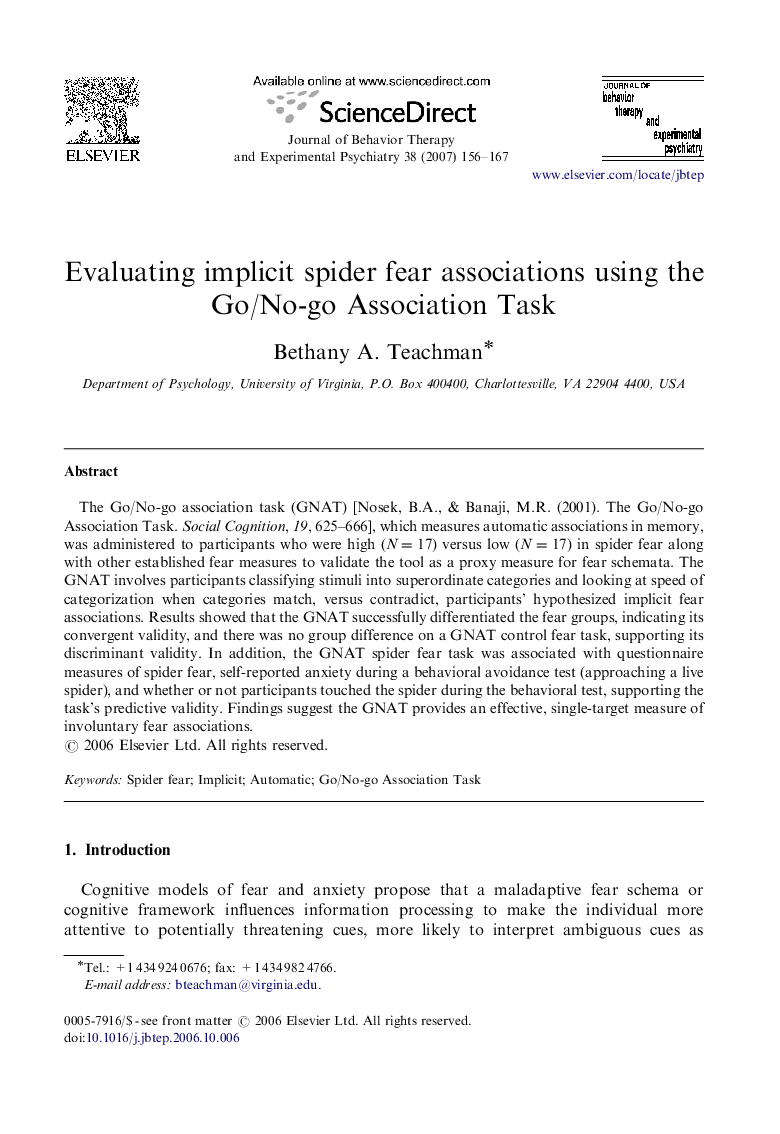| Article ID | Journal | Published Year | Pages | File Type |
|---|---|---|---|---|
| 910639 | Journal of Behavior Therapy and Experimental Psychiatry | 2007 | 12 Pages |
The Go/No-go association task (GNAT) [Nosek, B.A., & Banaji, M.R. (2001). The Go/No-go Association Task. Social Cognition, 19, 625–666], which measures automatic associations in memory, was administered to participants who were high (N=17) versus low (N=17) in spider fear along with other established fear measures to validate the tool as a proxy measure for fear schemata. The GNAT involves participants classifying stimuli into superordinate categories and looking at speed of categorization when categories match, versus contradict, participants’ hypothesized implicit fear associations. Results showed that the GNAT successfully differentiated the fear groups, indicating its convergent validity, and there was no group difference on a GNAT control fear task, supporting its discriminant validity. In addition, the GNAT spider fear task was associated with questionnaire measures of spider fear, self-reported anxiety during a behavioral avoidance test (approaching a live spider), and whether or not participants touched the spider during the behavioral test, supporting the task's predictive validity. Findings suggest the GNAT provides an effective, single-target measure of involuntary fear associations.
